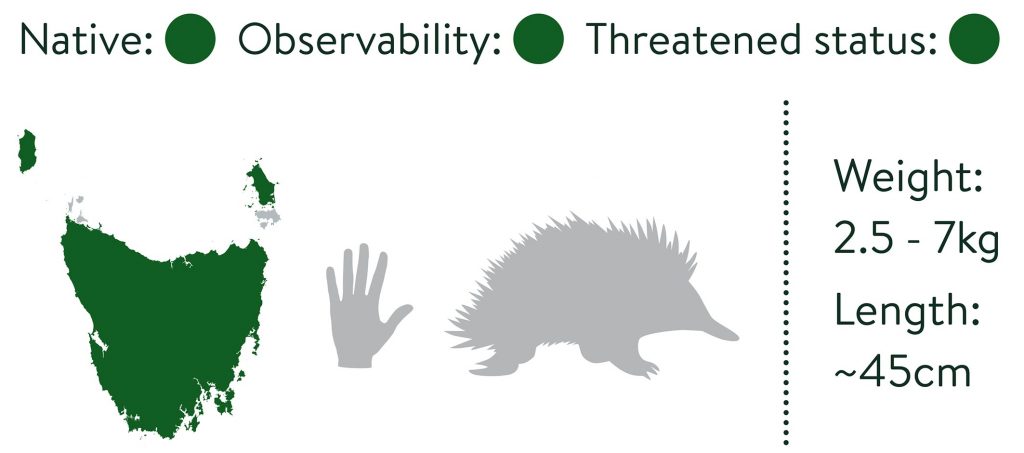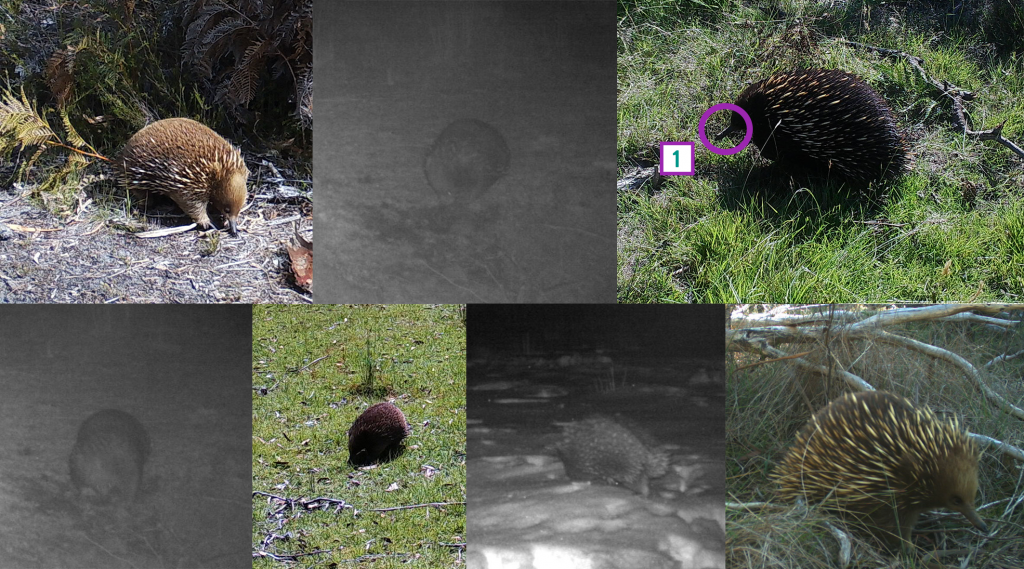Tachyglossidae | Tachyglossus aculeatus
The short-beaked echidna is the most widely distributed native mammal in Australia – they’re very adaptable and super strong! Tasmanian echidnas are fluffier than their mainland counterparts and can behave quite differently.

Lifestyle
Active night or day, echidnas are solitary animals. Tassie echidnas typically hibernate between February and July. During this time, they dramatically reduce their body temperature to a mere 4.5ºC and 1 breath per minute! Once a female echidna finds the perfect spot, she’ll dig a nursery burrow and close the entrance after them. She’ll then lay an egg (July-October) and incubate it in her pouch. Echidnas, like the platypus, are monotremes: the only egg-laying mammals in the world. The baby echidna, or “puggle” hatches from the egg just 10 days later when they are only 2cm long. After about 40 days, mum leaves the burrow, returning to suckle her puggle every few days until it is large enough (~2kg) to make a life of its own. Male echidnas eagerly compete for matings and may be seen following a female in an echidna “train”.

Key identifying features
Round body with sharp black-golden coloured spines. Long, strong, tubular snout (1). Small eyes. Short limbs and hind feet point ‘backward’ with long flattened claws. Fur colour varies from black to blonde. Tasmanian echidnas tend to have much more fur than mainland populations such that spines may only just protrude.
Similar species
None, but can easily be mistaken for rocks in camera images.
Habitats
The echidna is a true survivor, able to thrive in all habitats across Tasmania.
Diet
What do echidnas eat? Bugs, bugs, and more bugs! These creatures have a unique way of finding their food, using their strong claws, sensors in their beaks and long sticky tongues to locate invertebrate prey underground and beneath the bark of trees and logs.
Threats
Apart from native predators like wedge-tailed eagles, the biggest dangers echidnas face are road collisions and attacks from dogs.
